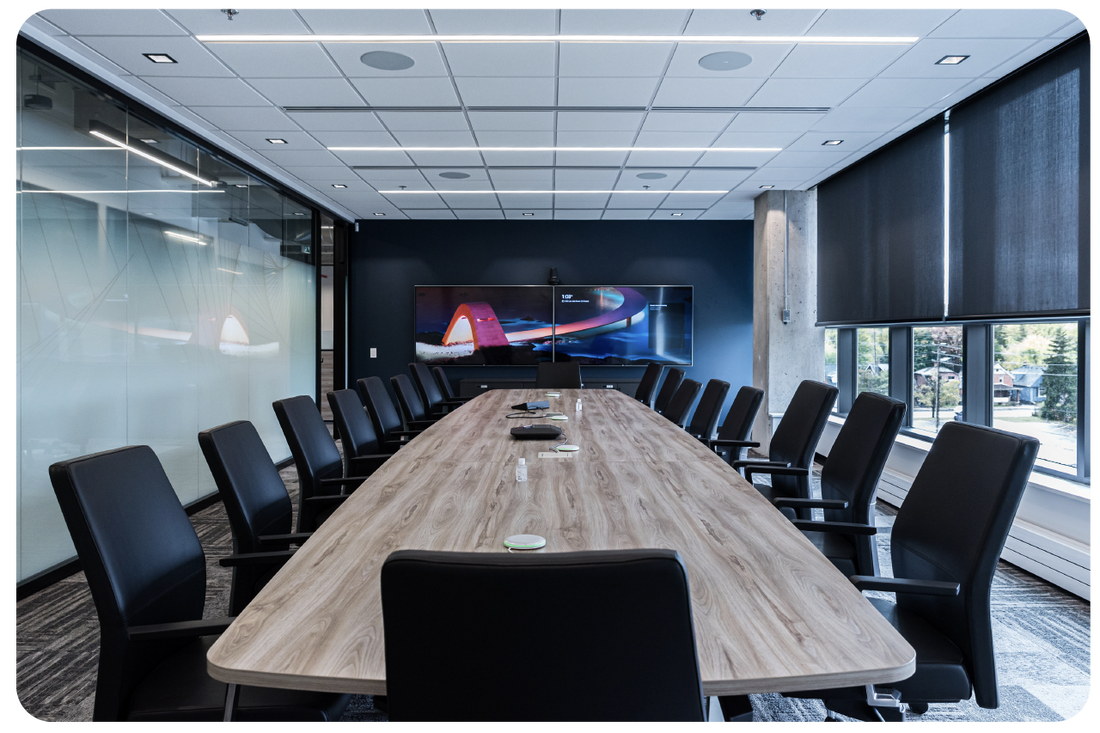Is it time to go back to the office?
Remote employment is dwindling...

An effort is underway to mandate that workers report back to work now that the pandemic is mostly over. Employers claim that the initiative to get things back to how they were before the emergence of remote work is motivated by consistency in operating schedules, work output, and company culture.
The American workforce isn't exactly beaming with joy as a result of the news. According to data from a Gallup poll cited in the Wall Street Journal, one-third of workers want to continue or acquire remote work. That’s backed up by statistics found on Linkedin, where 52.8% of all applications completed on Linkedin are for remote roles. It gets tricky because Linkedin also reports that the sphere of remote job postings is shrinking at an aggressive rate—down to 13.2% from just over 20% two months ago.

The picture is becoming clear. Employees and bosses are at odds over where and when work should occur. "There’s a bit of a tug of war going on right now," says David Garfield at the global consulting company AlixPartners.
As of Labor Day 2022, companies such as Apple required employees to return to the office and outlined a hardline stance on how often employees should put in "face time."
How that personal brand of expectations is implemented is unique to each company. Some HR departments are cajoling employees by sending friendly emails reminding them, "The office is still there and available to use! Oh, and btw, it has snacks and pizza in it." Some companies are doubling their time and financial investments by building lavish, state-of-the-art offices. They hope that the sleek building design, the sweet tech, and the nifty treadmill desk pods will emit a glow strong enough to pull employees’ curiosity and heartstrings right into their desks with a panoramic view.
Other companies are keeping it simple and going for no-nonsense policies like "Attendance is required, period. 😑"
Meanwhile, from the employee's point of view, many continue to believe in the benefits of remote work and are hesitant to return to the office full-time. They save money and time during a daily commute and can also manage their jobs, families, laundry, and well-being at home.
Then there are the employees who dove right into the remote lifestyle, taking advantage of a decent internet connection and the ability to live on top of forested mountains, rocky beach shores, and the occasional mid-sized sailboat or RV, far away from any home office. They’re wondering where they fit into the slow crawl back to the cubicle. Will they be forced to return to their daily commutes, cramped city apartments, and suburbia to stay gainfully employed?
Yep. It all seems to be squaring up to a bitter debate. But it doesn't have to be that way.
There’s been enormous strides and growth in technology to support distributed teams in the years since everyone found themselves reporting to their desk in their bunny slippers. The existence of voice-activated cameras, wall displays, video conferencing, and digital whiteboards create a company dynamic where the decision to require employees at their desks or not to require employees at their desks is generally equal in the outcome. Now, it’s a matter of preference for HR and P&C executives which mix of remote and in-office work to adopt. Mostly, the trend is to take a compromised approach and set up a hybrid working model.

The key to seeing success in the hybrid model is implementing the right technology and having trusted collaborators and service providers to make sure your solutions are done right.
PowerBx is the name brand for supporting your distributed and hybrid workforce. PowerBx is a culture and collaboration company. They help companies book, source, and manage workspace technology for distributed teams.
They power the entire workspace by increasing productivity and collaboration, from the front desk to every square inch in between. Companies are utilizing every space and upgrading with PowerBx. Employees can coordinate when and where to collaborate in person with friendly software space management solution partners using their products.
They track the optimization of places with analytics. Companies can see how their spaces and resources are used and get the most ROI out of the space.
The technology they provide brings people together to connect and collaborate. From welcoming guests with a lobby check-in experience to knowing exactly who is visiting, when, and why with alerts and instant document verification, you can see when colleagues are coming in to coordinate flexible schedules more easily. Coworkers can easily find, book, and check into workspaces with colleagues for in-person work. Leaders can then analyze room usage and optimize space to save on costs.
When an organization's space management technology is user-friendly, simple, and dependable, productivity rises regardless of whether employees work from home or the office. PowerBx achieves that goal for you, and they provide new office infrastructure technology, from interactive whiteboards to zoom control hardware and meeting room displays.

They partner with leading software in space management to help companies understand their workspace. They also help companies welcome visitors into the workplace while maintaining the company's health, security, and compliance needs. Once visitors and employees are in the building, they offer solutions for wayfinding and navigation. They help workspace visitors enjoy the building with top-featured indoor navigation: indoor-outdoor transition, automatic floor detection, turn-by-turn directions, and PRM-friendly routes.
Moreover, PowerBx gives you insightful data to make strategic, well-informed decisions related to your real estate management.
PowerBx helps you skip the debate over who works where and when. Whether your employees are in the office, working from home in their bunny slippers– or on a sailboat, swaying gently in the breeze with a good internet signal, PowerBx solutions bring people to work.
Check out Powerbx’s expanding catalog and pricing to support your needs.

